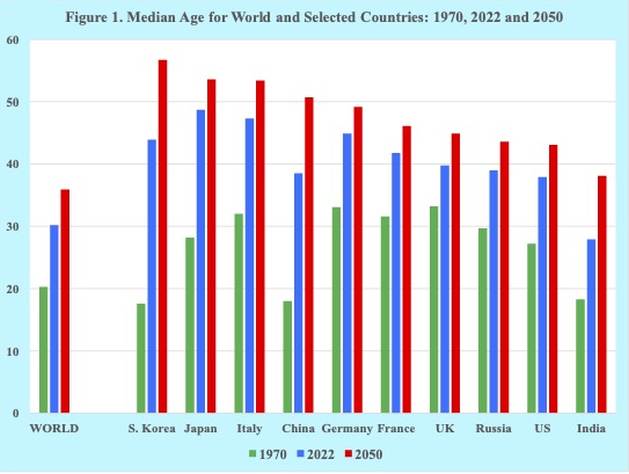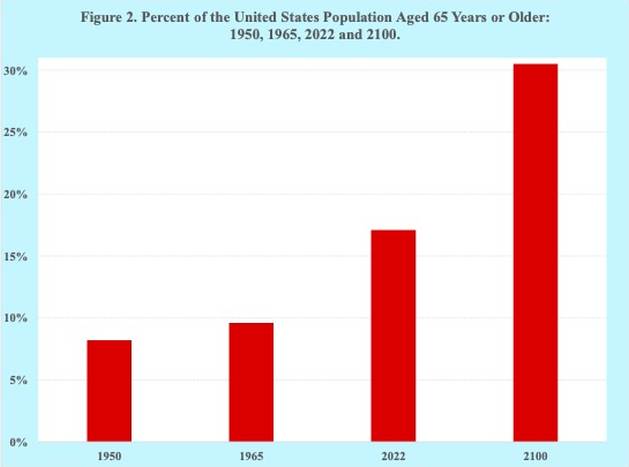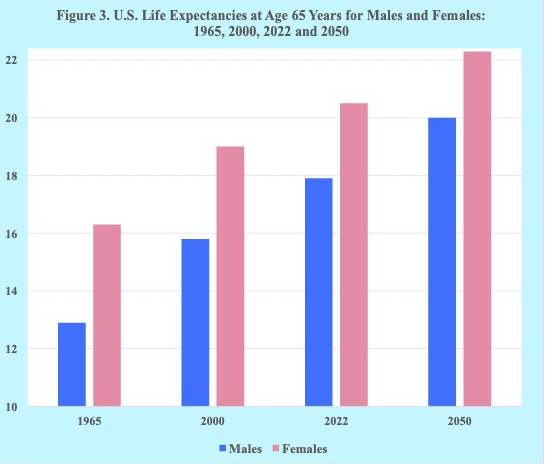PORTLAND, USA, Jan 09 (IPS) — As the signs of population aging are crystal clear and widely available, many countries are taking steps to address the far-reaching effects of that momentous demographic trend. A notable exception is the United States, a country that seems neither ready nor willing to deal with the aging of its population.
America’s government and its citizens appear ill-prepared to address the daunting consequences of population aging for the country’s economy, workforce and entitlement programs. Among those challenging consequences are the rising costs of programs for the elderly, the need for financial aid and long-term care for many older people and the dwindling financial resources of elderly households.
Many countries, including the United States, are well along in the demographic aging of their populations. While some countries, such as France, Germany, Italy, Japan and South Korea, have median ages above 40 years, other countries, including China, Russia, the United Kingdom and the United States, have median ages of nearly 40 years (Figure 1).

America’s elected officials tend to avoid addressing population aging. It seems that by ignoring or paying little attention to population aging, its many weighty consequences will diminish or simply go away.
However, the consequences of population aging for America’s federal budget, its economy, workforce and the overall well-being of its citizens are not imaginary and will not go away by simply ignoring them. On the contrary, the aging of America’s population is expected to have mounting effects on government programs, businesses, healthcare institutions, communities, families and individuals.
In ten years, for example, the U.S. federal government is expected to be spending half its budget on those aged 65 years or older. That spending will be used to support elderly Americans largely for health care and retirement benefits. Without sufficient government assistance, many elderly Americans will have to forgo needed care or rely on the uncertain assistance and care from family and friends.
While a secure retirement is a widespread desire across America, the financial resources of most Americans are not sufficient to cover their retirement expenses. Among households headed by someone 55 years and older, nearly half of them lack some form of retirement savings. Also, close to 30 percent of those who are retired or nearing retirement do not have retirement savings or a defined benefit plan.
In addition, the health conditions of America’s elderly are both worrisome and costly. About 80 percent of Americans 65 or older have at least one chronic condition, with about 68 percent having two or more.
It is estimated that nearly a half of elderly Americans are affected by arthritis, a quarter have some type of cancer and a fifth have diabetes. A third of the elderly have cognitive issues with approximately half of them having dementia.
Millions of older Americans are struggling with health challenges and increasing numbers are in need of caregiving services. Many elderly Americans also find it challenging to obtain or pay for the additional services they need as they age.
It is estimated that approximately 70 percent of U.S. adults aged 65 years and older will require long-care at some point, with the average length of stay in long-term care about three years. In 2021, the average annual costs of long-term care in America ranged between $35,000 and $108,000.
The median age of the U.S. population, which was about 27 years in 1965, has reached a record high of nearly 40 years. The median age of America’s population is continuing to rise and is projected to be 43 years by mid-century.
In addition, the proportion of America’s population age 65 years or older is also expected to continue rising. Whereas approximately 9 percent of the U.S. population was 65 years or older in 1965 when the Medicare program was established, by 2022 the proportion had almost doubled to 17 percent. That proportion is expected to nearly double again by the century’s close when approximately one in three Americans will be 65 years or older (Figure 2).

Furthermore, the U.S. will face noteworthy demographic aging turning points in the near future. Beginning in 2030, for example, all of America’s baby boomers will be older than 65 years. Also, in 2034 the share of America’s population age 65 years or older is expected to surpass that of children under age 18 year for the first time in the country’s history.
A major demographic force behind the aging of populations is low fertility. Whereas America’s fertility rate was nearly three births per woman in 1965, today it has declined to nearly a half child below the replacement level at 1.7 births per woman. Moreover, the country’s fertility levels are expected to remain well below the replacement level throughout the remainder of the century.
Increasing longevity among the elderly is also contributing to the aging of America’s population. U.S. life expectancies for males and females at age 65 years have risen markedly over the past sixty years. From 13 and 16 years for males and females in 1965, life expectancies at age 65 rose to 16 and 19 years by 2000 and further increased by 2022 to approximately 18 and 21 years, respectively. By mid-century, U.S. life expectancies at age 65 for males and females are expected to reach 20 and 22 years, respectively (Figure 3).

America’s major government programs for the elderly are being seriously affected by population aging. As a result of the increase in both the absolute and relative numbers of the elderly, the two largest programs, Medicare and Social Security, are rapidly approaching insolvency, which is expected in 6 and 13 years, respectively.
The U.S. Congress needs to act responsibly to address the expected funding imbalances and the insolvencies in those two programs. Not doing so would lead to across-the-board benefit cuts or abrupt changes to benefits or tax levels.
Democrats are by and large committed to maintaining funding for Social Security and Medicare, programs that were established by the democratic administrations of President Franklin Roosevelt and President Lyndon Johnson, respectively. The Democrats believe that all Americans have the right to a secure and healthy retirement and are committed to preserving Social Security and Medicare for future generations.
Over the years, public opinion polls have repeatedly demonstrated overwhelming support for those two programs. For example, approximately 80 percent of Americans support Social Security and oppose reducing benefits, and 70 percent are against increasing premiums for people enrolled in Medicare.
Republicans, in contrast, are reluctant to raise taxes and have resisted increasing funding for the government’s major entitlement programs. They claim that with Social Security and Medicare facing insolvency if cuts to benefits and costs are not made, those two programs will not be available for future generations. Republicans in general prefer the private sector, freedom of choice and individual responsibility, such as private retirement investment accounts and a voucher system for private health insurance.
Besides congressional actions, educational and community programs are needed to encourage responsible behaviors among Americans in preparing for and during old age. Men and women need to adopt behavior, take action and develop habits early on in their lives that promote their economic security, personal health and overall well-being in their retirement years.
In sum, the United States seems neither ready nor willing to deal with the aging of its population. But demography doesn’t care. As the U.S. population continues to become older over the coming years, America’s elected officials, the private sector, social institutions, communities, families and individuals will be obliged to cope with the inevitable, momentous and far-reaching consequences of population aging.
Joseph Chamie is a consulting demographer and a former director of the United Nations Population Division. He is the author of numerous publications on population issues, including his recent book, "Population Levels, Trends, and Differentials".






